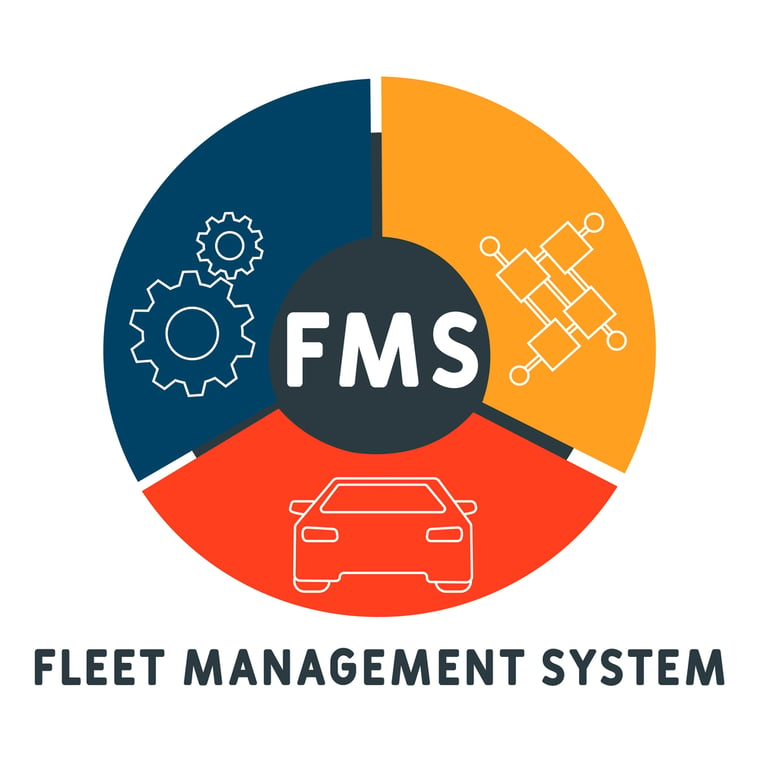Enterprise Fleets require more careful management than ever before as the fleet industry experiences tremendous volatility. Every inefficient operation within an organization requires closer control to maintain long-term success due to volatile fuel prices, a labor shortage, and increasing maintenance and material costs. While fleet enterprises confront these challenges, innovative technology opens up new opportunities to overcome obstacles and gain a competitive edge in the face of unpredictable market trends.
This blog will overview fleet management processes before reviewing the common challenges an enterprise fleet will face while running its fleets. We'll also explore a few ways to improve your current fleet management workflows before explaining how Tourmo can seamlessly integrate with your existing solutions to maximize their efficiency.
What Is the Fleet Management Process?
The term "fleet management process" is used broadly to describe several ongoing, rapidly changing processes essential to managing fleets of varying sizes. Fleet management requires careful planning, supervision, and continual adjustments for a fleet to work at its best and be as efficient as possible.
Instead of relying solely on manual processes alone, many fleet enterprises in both private and public sectors choose to utilize technology solutions to manage their fleets.
Tourmo’s AI-powered platform can work across your existing solutions to help fleet operators make more informed decisions, automate processes, reduce their reliance on manual labor, and automatically initiate desired actions from previously disparate data.
Common Fleet Management Challenges
Fleet managers will encounter various common fleet challenges throughout the day, such as monitoring their fleet assets and mobile workforce, reducing the likelihood of accidents, optimizing routes, maintenance issues, and more.
Some of the most common fleet management challenges include:
Fleet Management Workflow Optimization: 5 Expert Tips
Fleet management workflow optimization, or optimizing your daily workflows and processes, will involve automating the repetitive tasks that fleet managers perform on a daily basis. To help you get started reducing your reliance on manual tasks and boosting the performance of your fleet operations, we've listed a few expert tips below.

1. Reduce Time-Consuming, Manual Processes
You can significantly improve your current operational processes by reducing your reliance on time-consuming, potentially error-prone manual tasks. Whatever you choose to automate, you'll benefit from greater efficiency and productivity while freeing up your workforce to handle more complex tasks.
Examine all repetitive daily procedures, including work orders, reporting, correlating data, operational risk and issue detection, auditing processes, and invoices, to get started. Then, think about which tasks you should give priority to automate. You might be surprised to find how many of your internal processes can be automated entirely with careful review.
2. Streamline Worker Readiness Tasks
Fleet managers have a list of duties or procedures they follow to get their fleets ready for the day to start and end. These procedures may include driver interaction, reporting, scheduling training sessions, trip approvals, and follow-up communications. Consider delegating some of these tasks to automation to improve fleet efficiency.
Tourmo’s AI-powered platform can provide up to a 25% increase in workforce utilization, giving you all the resources you need to guarantee that your workforce, vehicles, and equipment are ready for work, with features like:
- Journey management (trip submission with fully or semi automated approvals)
- Worker qualification verification
- Worker process and policy updates
- Worker start of day checklists
- Vehicle checklists and inspections
- Worker fit-for-duty verification
3. Automate Work Tracking
Once you've finished the tasks necessary for worker readiness, you should automate more involved work tracking processes. Finding the best ways to deliver automation, insights, and transparency throughout an organization in real-time should be the goal during this phase.
Tourmo’s Mobile Workforce Solution can monitor whether work is being executed to plan. Our platform will take action through automated workflows to resolve current or predicted issues, and even notify your customers when there is a change when needed. You can identify and manage issues like delays at client sites, unplanned stops, route deviations, and out-of-sequence deliveries, with features such as:
- Service visit monitoring & verification
- Automated progress updates
- Real-time ETA
- Activity/Inactivity monitoring
4. Digitize Paper Documents
If all of your internal processes rely on print documents, which are easily misplaced, it will be challenging to streamline them and optimize your fleet management workflows. You should consider limiting your reliance on print documents and move towards digitized documents. The benefits can be surprising.
Tourmo’s highly-configurable platform can completely transform your unique business processes and forms and allow you to manage every step automatically, with features such as:
- On-site process management
- Field service issue reporting
- Custom process automation
- Electronic forms
- Immediate service verification
5. AI-Powered Insights and Automation Together
To optimize your fleet management workflows fully, it will be necessary to consolidate your data collection processes. Interpreting and acting on data from disparate sources is a common barrier to utilizing your data to its full potential.
Our patented AI platform can harmonize disjointed datasets and automatically reveal correlations within your data. These correlations will reveal valuable insights into your daily operations and new ways to improve your business, producing up to a 40% reduction in your fleet management costs.
Combining automation and artificial intelligence is the most cutting-edge method to optimize your fleet management workflows fully. AI is used to derive insights from your collected fleet data, and automation is used to reintegrate these valuable insights into your workflows.
Tourmo’s AI-powered platform can provide insight beyond what has been traditionally possible, delivering automation, task management, insights, and transparency across your organization. It does this to utilize your data for maximum impact, providing the correct information to the right people in real-time so that that action can be taken and measured.
Tourmo AI — Optimized Fleet Management Workflows
Data, advanced analytics, and software's ability to convey critical information to an entire workforce — drivers, mobile workers, field service personnel, clients, and partners — make Tourmo’s AI-powered platform distinct from the competition.
Tourmo can integrate with your current workflows to create consistently high-quality, effective, compliant, and safe operations. This will also help you to provide improved customer experiences, business outcomes, and auditability.
Author:
Marc Brungger is the CEO of Tourmo™, where he leads the company's ambitious expansion and execution of a new roadmap that positions Tourmo as a leader in AI-based mobility platforms. With over a decade in fleet and telematics, and twenty-five years in automotive technology software, Marc has a deep expertise in Fleet Management and Mobile Workforce Management. Before joining Tourmo, he held several leadership roles, significantly enhancing the performance and transformation of those companies.


.png) Marc Brungger, CEO
Marc Brungger, CEO



